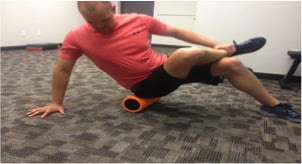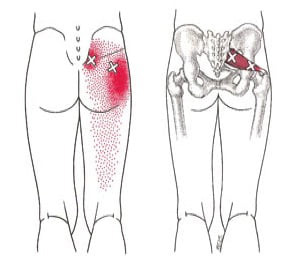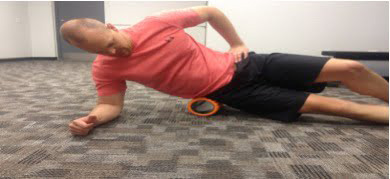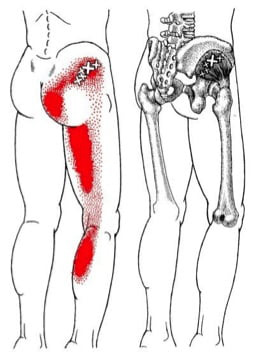Foam Rolling the Hips
What is foam rolling?
Foam rolling is a type of self-myofascial release which is a safe and very effective technique that involves applying pressure into the connective tissue restrictions to eliminate pain and restore motion. Myofascial release can be performed with a foam roller, lacrosse ball, theracane etc, with the goal of breaking up trigger points, aiding in the sliding/gliding of muscles, muscle recovery and establishing normal muscle function.
Normal function = muscles are supple, elastic, healthy and ready to perform
How does foam rolling work
When a muscle is exposed to a constant tension, or an injury occurs where the muscle fibers are broken down, the body repairs that broken down fiber with scar tissue. Scar tissue restricts range of motion, adheres to surrounding soft tissue and limits performance. Constant tension in a muscle can form trigger points/“knots” in your muscles. The trigger points are tender areas/overactive fibers/”spasms” in a muscle that causes generalized musculoskeletal pain when stimulated. When pressure is applied to a trigger point you can elicit referred pain in another area. Trigger points/adhesions can be caused by many things: Injury or trauma, constant tension in the muscle, or overuse or repetitive motion injuries.
Deep compression used with foam rolling helps relax tight muscles and break up adhesions formed between muscle layers and their surroundings. Additionally the compression allow for normal blood flow to return and restore healthy tissue. Think of foam rolling as a way of tenderizing your own muscles. Muscles should be soft and supple, similar to a babies muscles. However, when we start neglecting mobility/stretching tension builds up in the muscle leading to loss of flexibility, trigger points, tenderness, loss of function and pain.
Releasing trigger points helps to reestablish proper movement patterns and pain-free movement/performance which makes foam rolling superior to stretching.
Foam rolling of the hips
This hips should be the second most most joint in the human body. The problem is for most people, they are not. Because the hips are one of the most common sites of poor mobility, many people are walking around with dysfunctions. Fixing hip mobility won’t fix everything, but it will eliminate a major stressor on your musculoskeletal system. Below are two main muscle groups of the hips and how to properly foam roll them. Remember when foam rolling to relax, sink into the tissue, avoid rolling over a joint and perform slowly.
Piriformis/hip external rotator symptom patterns:
- Local pain in the back of the hip
- Glute Pain/”Sciatica”
- Pain with external rotation
- Lack of hip internal rotation
- Deep Hip Pain
We see in: Golfers, Runners, sagittal plane dominant athletes, sedentary individuals

Foam rolling the piriformis muscle

Trigger point pain pattern of the piriformis
Glute med symptom patterns:
- Local pain in the hip
- Deep Hip Pain
- Pain with sitting
- Waddling gait
- “Sciatica”
We see in: runners, hockey players, golfers, cyclists

Foam rolling the glute med muscle

Trigger Point pain pattern of the glute med
Myofascial release at Behm Muscle & Joint Clinic
At Behm Muscle & Joint Clinic, we are full body Active Release Technique (ART) providers. ART is the gold standard in soft tissue treatments and is a movement-based treatment for soft-tissue injuries that helps to break up scar tissue and restore normal function. This therapy has helped others suffering with hip pain or muscle pain that is not responding to self-myofascial techniques. New Patients are always welcome at Behm Muscle & Joint Clinic. Our Bellevue, Nebraska Chiropractic and Rehabilitation clinic provides the most up to date and evidence-based modalities to treat your muscle, nerve and joint pain. If you are suffering from hip pain do not hesitate to give us a call or schedule a consultation online.
About the author
Dr. Behm was born and raised in Papillion, NE. He received his Bachelor’s degree in Exercise Science from the University of Nebraska – Omaha and following his undergraduate studies was a certified personal trainer (NSCA-CPT – National Strength and Conditioning Association) in the Omaha area for years, helping clients achieve their health and fitness goals. He received his Doctorate in Chiropractic from Cleveland Chiropractic College – Kansas City. While in school, he received multiple certifications to increase his knowledge of the human body and how to properly assess and treat his patients. This translates into our integrative approach to Chiropractic care and our combination of therapies to better address your musculoskeletal complaints. Dr. Behm is excited to return to his hometown and serve the community around him.
